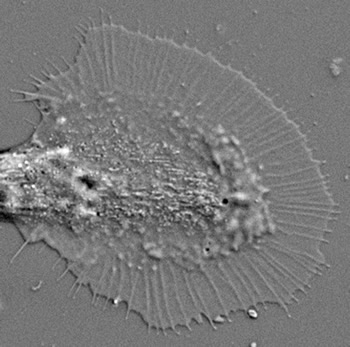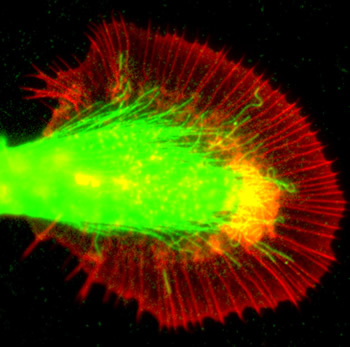
Differentiation and Growth
During the growth and development of an embryo to a fetus, and eventually to a fully grown organism, cells must differentiate into specific cell types and migrate to specific locations. This process involves many components, but in order for the cell to physically move from one location to another, rearrangement of the cytoskeleton is necessary for the cells to migrate. For example, neurons in the brain must send projections down the spinal cord and form the correct connections for both involuntary and voluntary actions of the body. This mechanism of axon pathfinding down the spinal cord is carried out by a structure called the growth cone. The growth cone reacts to environmental signals and rearranges actin filaments to move towards or away from these signals, eventually forming a connection to neurons or other tissues.
 |
 |
|
Aplysia growth cone in DIC optics. Diameter: 50 um. |
F-actin (red) and microtubule (green) labeling of the same growth cone. |